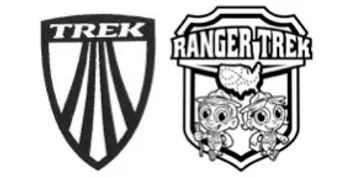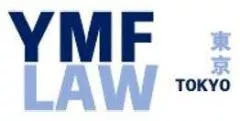- with readers working within the Basic Industries and Construction & Engineering industries
- within Privacy topic(s)
- with Finance and Tax Executives
. . . The Federal Circuit cited with approval the TTAB's finding that "TREK by itself simply references a journey or hike" but "RANGER TREK evokes . . . a specific type of person with a mission on a RANGER TREK. . . ."
The rough terrain of trademark disputes often involves traversing a complex course of obstacles erected by trademark law's multi-factorial tests. In one such case involving two trekking-themed trademarks – one belonging to the well-known bicycle and outdoor brand "Trek" and the other to a newcomer seeking to register the design mark "Ranger Trek" – first the TTAB (Trademark Trial and Appeals Board) and next the Federal Circuit endeavored to determine whether consumers were likely to be confused by any similarities in the two marks. To do so, both applied the thirteen factor test In re E.I. DuPont DeNemours & Co., 476 F.2d 1357, 1361 (CCPA 1973).
The Federal Circuit published its decision in Trek Bicycle Corp. v. Christina Isaacs, No. 2022-1434 (Fed. Cir. Nov. 15, 2023) ("Decision").
For comparison, Trek's renowned "shield" mark is depicted below on the left, and the "Ranger Trek" mark is depicted below to the right:

Trek opposed the registration of "Ranger Trek," asking the TTAB to halt the mark's use insofar as it would be applied to products in International Class 25 (backpacks, hiking bags, sports bags, and travel bags) and in International Class 18 (hats, jackets, and shirts) which both overlapped with Trek's registration of its own mark. After navigating the parties' submitted evidence and arguments and while guided by the DuPont factors, the TTAB determined that the marks were distinct enough to avoid likely consumer confusion despite their use in identical goods that might cross paths in the same channels of trade. Dissatisfied, Trek elevated its opposition to the Ranger Trek mark and disagreement with the TTAB's application of the DuPont factors to the Federal Circuit.
For reference, the thirteen DuPont factors include: "(1) similarity of the marks; (2) similarity and nature of goods described in the marks' [applications or] registrations; (3) similarity of established trade channels; (4) conditions of purchasing; (5) fame of the prior mark; (6) number and nature of similar marks in use on similar goods; (7) nature and extent of actual confusion; (8) length of time and conditions of concurrent use without evidence of actual confusion; (9) variety of goods on which mark is used; (10) market interface between applicant and owner of a prior mark; (11) extent to which [the] applicant has a right to exclude others from use of its mark; (12) extent of potential confusion; and (13) any other established probative fact on effect of use." Zheng Cai v. Diamond Hong, Inc., 901 F.3d 1367, 1371 n.2 (Fed. Cir. 2018) (citing DuPont, 476 F.2d at 1361).
Within the domain of trademark law, the Lanham Act functions like an air-traffic control tower in maintaining the orderly and distinctive movement of goods through commerce by prohibiting the registration of a trademark where it is "likely when used on or in connection with the goods of the applicant to cause confusion" with some other registered mark. 15 U.S.C. § 1052(d); see QuikTrip West, Inc. v. Weigel Stores, Inc., 984 F.3d 1031, 1034 (Fed. Cir. 2021). The TTAB sits in the controller's seat and enforces the Lanham Act's day-to-day directives on trademark registrations consistent with the DuPont factors. When reviewing TTAB decisions, the Federal Circuit "review[s] the [TTAB's] factual findings on each relevant DuPont factor for substantial evidence, but . . . review[s] the [TTAB's] weighing of the DuPont factors de novo." QuikTrip, 984 F.3d at 1034 (citation omitted). Less deference is afforded the TTAB's weighing of the DuPont factors because the ultimate determination of "likelihood of confusion is a question of law based on the underlying facts." Spireon, Inc. v. Flex Ltd., 71 F.4th 1355, 1362 (Fed. Cir. 2023). Review for substantial evidence means determining whether "a reasonable mind would accept [the evidence] as adequate to support a conclusion." Zheng Cai, 901 F.3d at 1371.
In reviewing the TTAB's decision here, the Federal Circuit took a shortcut, explaining that it need only "consider the DuPont factors of significance to the particular mark in the likelihood of confusion analysis." Tiger Lily Ventures Ltd. v. Barclays v. Capital Inc., 35 F.4th 1352, 1362 (Fed. Cir. 2022). The Federal Circuit, therefore, oriented its analysis to DuPont factors one, five, six, and thirteen, for which Trek insisted the TTAB's analysis had strayed from proper application.
DuPont Factor One
Addressing the first of these factors, the Federal Circuit searched for similarities in the marks "in terms of their commercial impression" that might lead consumers to believe that there is a common connection between the owners of the two marks. In re I.AM. Symbolic, 866 F.3d 1315, 1323 (Fed. Cir. 2017). "Commercial impression" means "the ultimate conclusion of similarity or dissimilarity of marks resulting from a comparison of their appearance, sound, and meaning." Palm Bay Imps., Inc. v. Veuve Clicquot Ponsardin Maison Fondee En 1772, 396 F.3d 1369, 1372 (Fed. Cir. 2005) (citations omitted). The Federal Circuit agreed with the TTAB's assessment that the two marks diverge in their "appearance, sound, and connotation." Decision at 7.
The Federal Circuit rejected Trek's argument that the word "TREK" is the dominant part of both marks. The Federal Circuit reasoned that even when "structurally similar, a mark's lead word may be the 'dominant portion' of the mark and is 'likely to make the greatest impression on consumers' because consumers typically notice the first word of a mark first." Decision at 8 (quoting In re Detroit Athletic Co., 903 F.3d 1297, 1303 (Fed. Cir. 2018) (citing Palm Bay, 396 F.3d at 1372)).
The Federal Circuit cited with approval the TTAB's finding that "TREK by itself simply references a journey or hike" but "RANGER TREK evokes . . . a specific type of person with a mission on a RANGER TREK." Decision at 8 (quoting TTAB (emphasis added)). Trek responded by presenting extensive evidence that mapped out the presence of its branded bicycles across America's parks and trails, bicycles that are designed and manufactured for real-world adventurers who daily embark on just such missions. Trek insisted that the "enormous" presence of its branded products throughout America's rugged parks "'diminish[es] any meaningful distinction' between the parties' marks." Decision at 8.
Unpersuaded, the Federal Circuit concluded that the evidence merely reinforced the connection of the TREK mark used with the company's backpacks and apparel to its "bicycles and bicycling services" rather than to a "person with a mission on a RANGER TREK." Decision at 8. The Federal Circuit bolstered its conclusion by reciting with approval the TTAB's additional finding that "'the RANGER TREK design had a very different shape from Trek's shield design and that the RANGER TREK design merely amplifie[d] the RANGER connotation' by 'depicting children heading out on a hike in ranger outfits.'" Decision at 9 (emphasis in original).
DuPont Factors Five & Six
Upon considering the fame and commercial strength of the TREK mark under DuPont factor five, the TTAB acknowledged Trek's renown as to the mark's use with bicycles and their accessories but found no evidence that "'such fame and commercial strength'" extend to backpacks and apparel. Decision at 10 (quoting TTAB). The Federal Circuit was satisfied that the TTAB properly disregarded Trek's extensive evidence of its marketing and promotional expenditures as evidence of its mark's fame and commercial strength because the evidence was "'not broken down by product and [did] not appear to be for only clothing and bags.'" Decision at 11 (quoting TTAB). Trek's marketing evidence therefore failed to provide the necessary "context" linking its expenditures to the products in dispute. Cf. Omaha Steaks Int'l, Inc. v. Greater Omaha Packing Co., 908 F.3d 1315, 1320 (Fed. Cir. 2018) (opposition "provided considerable contextual evidence of the type of advertisements and promotions it uses to gain sales").
DuPont factor six, conceptual strength, called upon the court to measure the distinctiveness of Trek's mark. Once again, trekking terms came into play, with the court agreeing with the TTAB that "TREK" is a suggestive mark afforded narrow protection because the mark "suggests" some relationship with the branded goods. See Spireon, Inc., 71 F.4th at 1362. For example, the TTAB noted that "TREK" is a term included in other third-party trademark registrations such as, "STAR TREK SKELE-TREKS," that are likewise associated with backpacks and apparel. Decision at 12-13. The Federal Circuit confirmed that the TTAB properly turned to dictionary definitions of "trek" as "'arduous journey' or 'difficult journey, hike or trip'" as further evidence that the mark suggests association with gear used in such "treks." Id. (quoting TTAB).
DuPont Factor Thirteen
Factor thirteen is a catch-all, permitting the TTAB and court to consider "any other established fact probative of the effect of use." QuikTrip, 984 F.3d at 1036 (quoting DuPont, 476 F.2d at 1361). Given that wide-roaming discretion, the TTAB dusted off the prosecution history for the registration of Trek's original "TREK" standard character mark for use with apparel as evidence of no confusion.
Trek argued that in doing so, the TTAB failed to give due weight to the USPTO's original determination and refusal to register the standard character mark "TREK" "for apparel due to likely confusion with five registered marks containing the word "TREK" for various footwear and clothing." Decision at 14. The Federal Circuit was not convinced that the TTAB should be bound by its initial rejection of "TREK" because Trek was ultimately allowed to register the mark for use with apparel. The rejection was withdrawn, in part, due to Trek's own argument at the time that "if the five registered marks containing the word 'TREK' can coexist with one another, then the proposed [sixth] TREK standard character mark can also coexist with the five registered marks." Decision at 14. The Federal Circuit found no fault in the TTAB's conclusion that yet a seventh "TREK" mark could be added to the apparel class without confusion, especially "'where the addition of 'RANGER' creates a sufficient distinction.'" Id. (quoting TTAB).
Looking Ahead
In conclusion, this case illustrates the unpredictability of trademark cases that must navigate the uneven terrain of DuPont's thirteen factors. The goal of the multi-factorial test is to determine a consumer's likelihood of confusion when presented with similar marks. With the exceptions of factors seven and eight which invite evidence of actual confusion, parties are thrust into a largely hypothetical and subjective intersection of competing factors that can be wielded effectively, or not, depending upon the creativity and dedication of each party's advocacy. The TREK case is likewise a useful reminder that the fame and strength of a mark in one product category does not necessarily project into other even related product categories. The end result in this case is that TREK backpacks may end up being displayed alongside RANGER TREK backpacks in some commercial establishments. If the TTAB and Federal Circuit are correct, consumers will understand that the two products arrived via entirely different "treks" on their way to the store's shelves.
Originally published by 23 November, 2023
The content of this article is intended to provide a general guide to the subject matter. Specialist advice should be sought about your specific circumstances.


